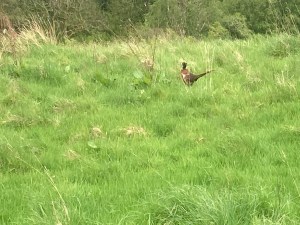Walking to Cape Wrath, Day 23, June 2, 2022
SORRY— this one is out of order, too many days out in the glens
A day of two passes, divided by some time in a pub. It rained a bit in the night, just enough to give each blade of grass a crown. As I wanted to time today’s trek to get lunch at Cluanie Inn, I lingered in the tent, watching the morning sun—itself a surprise—gently lift the water from the fabric, getting a late start. The walk out was along a squtichy boggy path first up the Glen then up and over a pass in the gap between Creag Liathtais and Creag a’Mhaim (I missed that turn, adding 20 minutes to my day). The landscape remains magical, particularly in the bright morning light. Soon I was up and over, slowly descending to a well built road which historically was part of the “Road to the Isles,” which is now defunct because of hydro-electric projects. It made for a quick final 5km to the Cluanie Inn. There the proprietor let me hang out in the pub charging my devices (something I’ve become obsessed with given the frequency of encounters with civilization). Soon they opened for lunch, and I gorged myself, then lingered out front in the sun sipping yet another pint delaying my afternoon which was, in many ways, the mirror image of my morning.
On leaving the Inn I found the track into the An Caorann Mòr, a long gentle climb on a land rover road which, on giving out became in indistinct path even boggier than the morning. After several hours of slogging about I finally sighted the Affric river beyond which I could see the hostel, my end point. I gratefully forded the river in the last 1/2 km, happy to wash away the day’s accumulated muck before settling in. The Glen Affric Hostel (run by the Scottish Hostel group) is an isolated off-the-grid establishment frequented by mountain bikers and Munro baggers. Initially there was a mixup with my reservation, but it was soon resolved, and I spent a toasty evening by the fire (while it rained outside) talking with a whole crew of hard-core outdoors aficionados.
T. Hugh Crawford




































